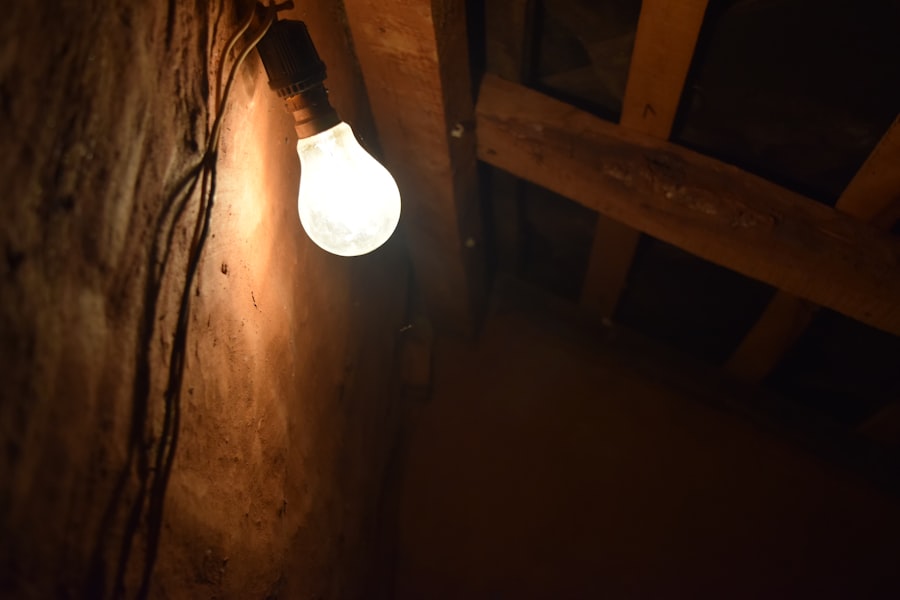Maintaining the correct temperature for baby chickens is essential for their health and development. Chicks are highly sensitive to temperature changes in their environment during the first few weeks of life, as they cannot effectively regulate their body temperature. Providing appropriate warmth is crucial for their growth and survival.
Failure to maintain the right temperature can lead to stunted growth, weakened immune systems, and mortality. Temperature regulation is particularly critical during the initial weeks of a chick’s life. During this period, chicks are still developing feathers and cannot generate sufficient body heat independently.
They rely heavily on their environment to maintain a suitable temperature. Exposure to cold temperatures can result in hypothermia, leading to decreased appetite, slowed growth, and increased susceptibility to diseases. Conversely, excessive heat can cause heat stress, dehydration, and heat stroke.
Therefore, providing the optimal temperature is vital for ensuring the overall health and well-being of baby chickens.
Table of Contents
- 1 Factors to consider when determining the ideal temperature for baby chickens
- 2 Tips for adjusting temperature for baby chickens in different environments
- 3 Signs that indicate baby chickens are too cold or too hot
- 4 Methods for providing warmth to baby chickens
- 5 Monitoring and maintaining the temperature for baby chickens
- 6 Potential risks of not providing the right amount of warmth for baby chickens
- 7 FAQs
- 7.1 What is the ideal temperature for baby chickens?
- 7.2 How do I maintain the right temperature for baby chickens?
- 7.3 What are the signs of baby chickens being too cold or too hot?
- 7.4 At what age can baby chickens regulate their own body temperature?
- 7.5 Can baby chickens be kept outside without a heat source?
Key Takeaways
- Maintaining the right temperature is crucial for the health and growth of baby chickens
- Factors such as age, breed, and environmental conditions should be considered when determining the ideal temperature for baby chickens
- Tips for adjusting temperature include using heat lamps, adjusting ventilation, and providing warm bedding
- Signs of baby chickens being too cold include huddling together, while signs of being too hot include panting and spreading wings
- Providing warmth can be done through heat lamps, brooders, and warm bedding
- Monitoring temperature regularly and making necessary adjustments is important for the well-being of baby chickens
- Not providing the right amount of warmth can lead to health issues, stunted growth, and even death for baby chickens
Factors to consider when determining the ideal temperature for baby chickens
Breed-Specific Temperature Needs
Different breeds of chickens have varying levels of cold tolerance, with some being more cold-hardy than others. For example, breeds such as the Rhode Island Red and Plymouth Rock are known for their ability to withstand colder temperatures, while breeds like the Silkie and Serama are more sensitive to cold. Understanding the specific needs of the breed is crucial in providing the right amount of warmth for baby chickens.
Ambient Temperature and Environmental Factors
The ambient temperature of the environment also plays a critical role in determining the ideal temperature for baby chickens. The temperature inside the brooder or coop should be carefully monitored and adjusted accordingly to ensure that it remains within the appropriate range for the chicks. Factors such as humidity levels and drafts should also be taken into account, as they can impact the perceived temperature for the chicks.
Age-Dependent Temperature Requirements
The age of the chicks is an important consideration when determining the ideal temperature. Younger chicks require higher temperatures to compensate for their inability to regulate their body heat effectively, while older chicks can tolerate lower temperatures as they develop their feathers and grow more resilient.
Tips for adjusting temperature for baby chickens in different environments
Adjusting the temperature for baby chickens in different environments requires careful attention and monitoring. In colder climates, it may be necessary to provide additional sources of warmth to ensure that the chicks remain at a comfortable temperature. This can be achieved by using heat lamps, heating pads, or brooder heaters to supplement the natural warmth provided by the mother hen or other chicks.
It is important to position these heat sources strategically within the brooder or coop to create a gradient of temperatures, allowing the chicks to move closer or farther away as needed. Conversely, in warmer climates, it is crucial to prevent overheating by providing adequate ventilation and cooling options for the chicks. This can be achieved by using fans or opening windows and vents to allow for air circulation and heat dissipation.
Additionally, providing access to shade and cool water can help prevent heat stress and dehydration in hot environments. It is important to regularly monitor the temperature and behavior of the chicks in different environments and make adjustments as necessary to ensure their comfort and well-being.
Signs that indicate baby chickens are too cold or too hot
It is essential for poultry farmers and backyard chicken enthusiasts to be able to recognize the signs that indicate baby chickens are either too cold or too hot. When chicks are too cold, they may huddle together for warmth, appear lethargic, or exhibit signs of distress such as chirping loudly or shivering. In severe cases, they may become unresponsive and weak, indicating hypothermia.
On the other hand, when chicks are too hot, they may pant excessively, spread their wings away from their bodies, or seek out cooler areas within the brooder or coop. They may also exhibit signs of heat stress such as decreased activity, reduced appetite, and increased water consumption. In addition to observing their behavior, it is important to monitor their physical condition for signs of temperature-related stress.
Chicks that are too cold may have cold feet and be reluctant to move or eat, while chicks that are too hot may have warm or hot feet and appear restless or agitated. Regularly checking on the chicks and observing their behavior and physical condition can help identify any issues with temperature regulation and allow for prompt adjustments to be made.
Methods for providing warmth to baby chickens
There are several methods for providing warmth to baby chickens, depending on the specific needs of the chicks and the environmental conditions. One common method is the use of heat lamps, which emit radiant heat and can be adjusted to provide the appropriate level of warmth for the chicks. Heat lamps should be positioned at one end of the brooder or coop to create a gradient of temperatures, allowing the chicks to move closer or farther away as needed.
It is important to use caution when using heat lamps to prevent fire hazards and burns, as they can pose a risk if not properly secured and monitored. Another method for providing warmth to baby chickens is through the use of heating pads or brooder heaters. These devices can be placed underneath or within the brooder to provide a consistent source of warmth without the potential risks associated with heat lamps.
Heating pads should be covered with a layer of bedding to prevent direct contact with the chicks and ensure even distribution of heat. Brooder heaters are designed to maintain a constant temperature within the brooder and can be adjusted based on the specific needs of the chicks.
Monitoring and maintaining the temperature for baby chickens

Accurate Temperature Measurement
Reliable thermometers are essential for accurately measuring the temperature inside the brooder or coop. It’s vital to place thermometers at different heights within the brooder to account for temperature variations and gain a comprehensive understanding of the overall thermal environment.
Observing Chick Behavior and Condition
In addition to using thermometers, regular observation of the chicks’ behavior and physical condition is crucial to assess their comfort level and make any necessary adjustments. This includes monitoring their activity levels, appetite, and water consumption, as well as checking for any signs of distress or discomfort.
Ensuring Healthy and Thriving Chicks
By staying vigilant and proactive in monitoring and maintaining the ideal temperature for baby chickens, poultry farmers and backyard chicken enthusiasts can ensure that their chicks remain healthy and thriving.
Potential risks of not providing the right amount of warmth for baby chickens
Failing to provide the right amount of warmth for baby chickens can lead to a range of potential risks that can negatively impact their health and well-being. If chicks are exposed to temperatures that are too cold, they may suffer from hypothermia, which can result in stunted growth, weakened immune systems, and increased susceptibility to diseases. In severe cases, hypothermia can lead to death if not addressed promptly.
Conversely, if chicks are exposed to temperatures that are too hot, they may experience heat stress, dehydration, and heat stroke, which can also be fatal if not managed effectively. In addition to immediate health risks, inadequate warmth can have long-term effects on the development and resilience of baby chickens. Chicks that are not provided with the appropriate level of warmth during their early stages may experience developmental delays and have compromised immune systems, making them more susceptible to illnesses and infections later in life.
Furthermore, inadequate warmth can lead to increased stress levels in chicks, which can impact their overall well-being and productivity as they mature into adult chickens. Therefore, it is essential to prioritize providing the right amount of warmth for baby chickens to ensure their long-term health and success.
If you’re looking for more information on raising baby chickens, Poultry Wizard has a helpful article on their website about the ideal temperature to keep baby chickens. You can find the article here. It’s important to ensure that baby chickens are kept warm enough to thrive and grow properly.
FAQs
What is the ideal temperature for baby chickens?
The ideal temperature for baby chickens is around 95°F (35°C) for the first week of their life, and then it can be reduced by 5°F (2.8°C) each week until they are fully feathered.
How do I maintain the right temperature for baby chickens?
You can maintain the right temperature for baby chickens by using a heat lamp or a brooder to provide a warm and draft-free environment. It’s important to monitor the temperature regularly to ensure it stays within the recommended range.
What are the signs of baby chickens being too cold or too hot?
Signs of baby chickens being too cold include huddling together, chirping loudly, and being lethargic. Signs of them being too hot include panting, spreading their wings, and trying to move away from the heat source.
At what age can baby chickens regulate their own body temperature?
Baby chickens can regulate their own body temperature once they are fully feathered, which typically occurs around 6-8 weeks of age, depending on the breed.
Can baby chickens be kept outside without a heat source?
It is not recommended to keep baby chickens outside without a heat source until they are fully feathered and able to regulate their own body temperature. They are very vulnerable to temperature fluctuations and need a warm environment to thrive.
Meet Walter, the feathered-friend fanatic of Florida! Nestled in the sunshine state, Walter struts through life with his feathered companions, clucking his way to happiness. With a coop that’s fancier than a five-star hotel, he’s the Don Juan of the chicken world. When he’s not teaching his hens to do the cha-cha, you’ll find him in a heated debate with his prized rooster, Sir Clucks-a-Lot. Walter’s poultry passion is no yolk; he’s the sunny-side-up guy you never knew you needed in your flock of friends!








